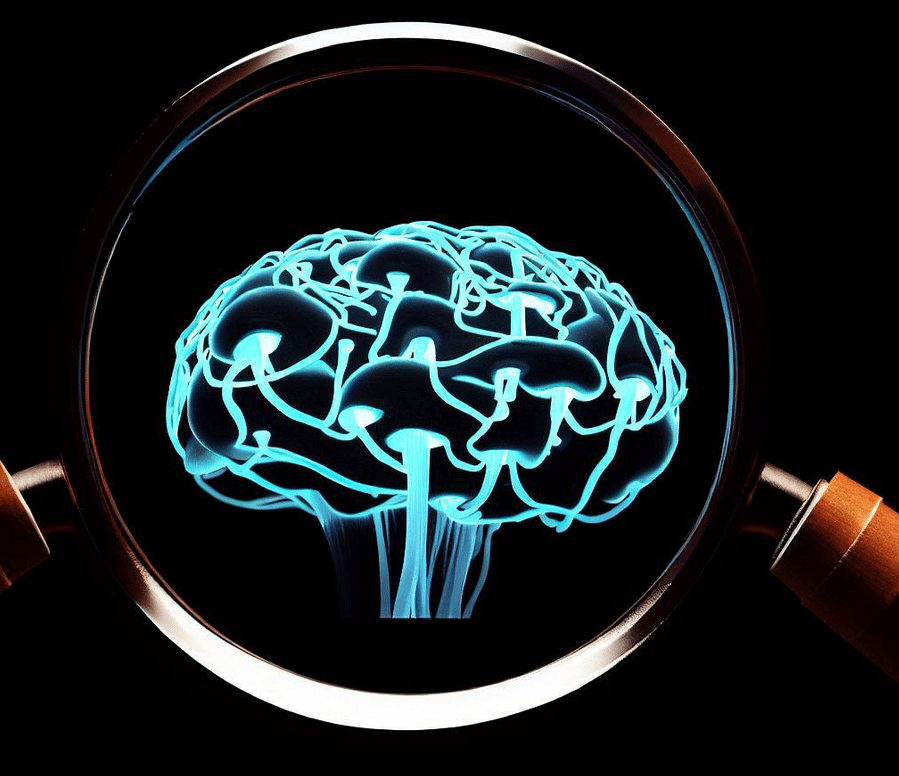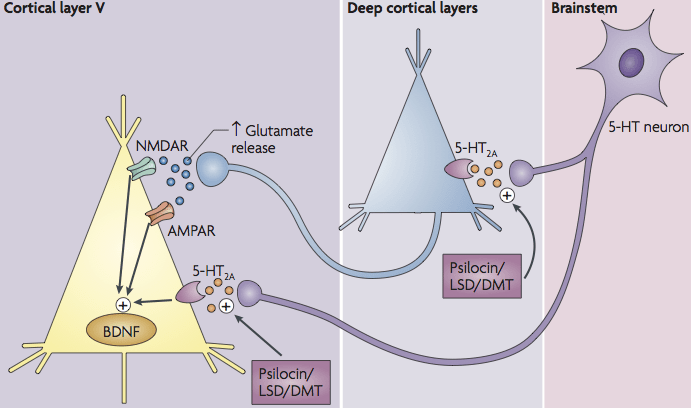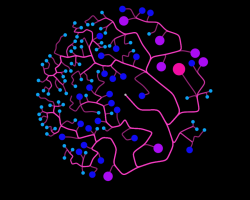Psilocybin and LSD for more neurons
Neurochemistry and BDNF
BDNF stands for Brain Derived Neurotrophic Factor and is a protein that stimulates the growth and survival of nerve cells in the brain. Both psilocybin and LSD are known to increase the release of BDNF. This is because these substances bind to serotonin receptors in the brain, causing a chain reaction that leads to the release of BDNF.
When BDNF is released, it stimulates the growth of new nerve cells and synapses in the brain. This can lead to improved cognitive functions, such as memory and learning ability. BDNF has also been shown to help treat depression, anxiety and substance abuse disorders.
It is not yet fully known how exactly psilocybin and LSD work in the brain, but the increase in BDNF is one of the promising effects that have contributed to research into the therapeutic potential of these drugs.

Glutamate also helps
Glutamate is an important neurotransmitter found throughout the brain and involved in various neuropsychiatric disorders. It also plays a crucial role in neuroplasticity, which refers to the brain's ability to reorganize itself and adapt to changing environments. Glutamate activates N-methyl-D-asparate (NMDA) receptors, leading to changes in synaptic transmission and the eventual formation of new synapses in the brain. It also increases the expression of growth factors such as the aforementioned BDNF, which contributes to the survival and growth of neurons. In the right place in the brain, such as in the hippocampus, glutamate plays an important role in learning, memory and general neuroplasticity. However, excess glutamate can lead to neuron hyperexcitability and neurotoxicity, which can lead to various neurological disorders such as stroke and epilepsy.
5HT2a receptor
The transformation of gene expression in various brain cells is triggered by the interaction of psychedelics such as psilocybin and LSD, which have a strong affinity for 5HT2a receptors. The resulting increase in BDNF and glutamate release further alters the physiological state of the brain, contributing to the diverse effects of these substances. More aspects play a role in the use of substances such as psilocybin.

Psychedelics against neurodegenerative disorders?
Psilocybin and psychedelics have potential therapeutic use in neurodegenerative disorders such as multiple sclerosis (MS) and Parkinson's. This is because these substances can increase neuroplasticity, which allows the brain to adapt and create new connections. Neuroplasticity is the brain's ability to adapt and change by creating new neural networks or strengthening existing ones. In neurodegenerative disorders, the brain is damaged and these mechanisms can be limited. This can lead to symptoms such as tremors, stiffness and difficulty moving.
Studies have shown that treatments with psilocybin and psychedelics can increase neuroplasticity and even create new neural connections. This can lead to improvement in symptoms and improvement in overall quality of life in patients with neurodegenerative diseases. While more research is still needed to determine the effectiveness and safety of these treatments, psilocybin and psychedelics offer hope for people with neurodegenerative disorders who are currently struggling with limited options for treatment and improvement of their symptoms.
Neuroplasticity in depression
Research has shown that increased neuroplasticity can help alleviate depression because it can lead to a reconfiguration of the brain's reward and emotion systems. In people with depression, this system is often disrupted. Increased neuroplasticity allows new neuronal pathways to be formed that help repair this dysfunction. In theory and according to various scientific studies, psychedelics such as psilocybin and LSD can help with depression.
New neuroconfiguration against anxiety complaints
Achieving a new neuroconfiguration is a consequence of psychedelic therapy and involves retraining the brain to better deal with anxiety complaints. The idea is that anxiety complaints arise from incorrect patterns in the brain, which can be changed by learning new, healthy patterns. The best results are achieved when these techniques are applied in the limbic system, the part of the brain responsible for emotions, motivation and memory. This area is crucial in the development and maintenance of anxiety complaints. An altered neuroconfiguration can be effective for people who suffer from anxiety and can help them feel more calm and relaxed in daily life.
Ready for a psychedelic session?
Psychedelic sessions are not suitable for everyone and there are several contraindications that should be considered before deciding to partake in a psychedelic experience. Individuals with a history of mental illness such as schizophrenia, bipolar disorder, or psychotic episodes should be cautious when using psychedelics. Individuals with a history of cardiovascular disease, high blood pressure, liver or kidney disease should also be careful when using psychedelics. Additionally, individuals taking medications such as antidepressants, antipsychotics, or antihypertensive medications should use caution when using psychedelics due to potential interactions between the medications. Finally, pregnant and breastfeeding women should avoid using psychedelics due to possible negative effects on the baby. It is therefore important that it is carefully checked whether you can do a psychedelic session. Use the intake below so that we can screen for known contraindications for substances such as MDMA, LSD, psilocybin and psilohuasca (psiloflora).







